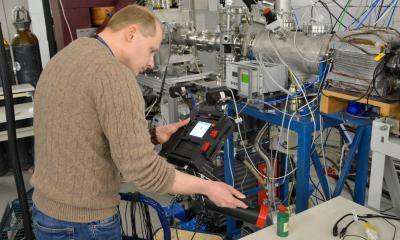iPhones and healthcare
Report: Dot M. McSherry, i.t. Communications
January saw the release of a German language version of Radiation Passport, an iPhone application that enables patients to calculate estimated radiation exposure from diagnostic imaging procedures and keep a personal record of their examinations. Radiation Passport costs US$3.99; by the end of 2009 over 1,000 English language versions were sold.

The brainchild of Dr Mark Baerlocher (when a radiology resident at the University of Toronto) the application has radiation dose exposure calculations for about 140 of the most common radiological procedures for the adult body and gender. Dr Baerlocher used radiation dose statistics from peer-review journals as a basis for his calculations.
Radiation dose estimates for children are not yet available. The software developers are aware of the Image Gently campaign to child-sise radiation dose, especially that of CT and fluoroscopy, and recognise that, when they can offer this, the application would become useful for parents.
In addition to providing a record of imaging exams, the application provides an easy way for doctors to evaluate the risk-benefit equation of a diagnostic imaging procedure they may be thinking of ordering.
Hospital A&E waiting times
Residents of central Connecticut can download a free iPhone application that tells how long the waiting times are in the accident and emergency (A&E) departments in five local hospitals. In addition to showing the delay before patients without life-threatening medical conditions can be seen, it provides easy to understand directions to the hospitals.
Emergency teams at the Hospital of Central Connecticut and Middlesex Hospitals are pleased with the application because it gives patients an idea of what to expect in terms of waiting for treatment before they arrive. It is also seen as a useful tool to provide better emergency patient distribution among the hospitals. Importantly, patients who do need urgent treatment may also be in a better situation if they know which hospitals to avoid. In an interview in February with the Hartford Courant newspaper, the head of emergency medicine at the Hospital of Central Connecticut said that this was also particularly useful for physicians if an emergency unit was backed up with multiple trauma cases or patients who had heart attacks.
The system was designed for the 75% of patients who arrive at an A&E unit of their own accord, but without life-threatening injuries or symptoms. So far, Middlesex Hospital’s site alone has been viewed more than 23,000 times since first offered in September 2009. The information also can be accessed via www.middlesexexamtime.com.
14.05.2010











